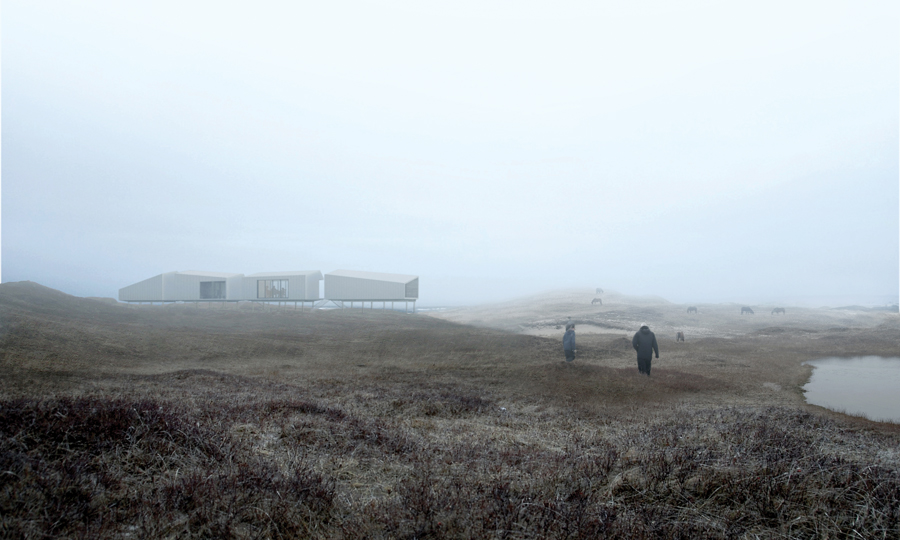Sable Island National Park
Matthew Griffin-Allwood, Dalhousie University
WINNER OF A 2014 CANADIAN ARCHITECT STUDENT AWARD OF EXCELLENCE

STUDENT Matthew Griffin-Allwood, Dalhousie University
Sable Island’s remote position, unique ecosystem and intricate balance make it an engaging, dynamic landscape that has captivated human attention for centuries. It is located on the edge of the continental shelf, between the Gulf Stream and Labrador Current, 175 kilometres from the nearest point of land in Nova Scotia. Its delicate ecosystem, formed on the emergent tip of a sand bar, is characterized by hundreds of plant, bird and marine species and is most famous for its iconic wild horses.
The dilapidated existing infrastructure on Sable Island is comprised of building typologies conventional to mainland Nova Scotia. They are ill-adapted to the island’s shifting sand and they quickly become buried or undermined, requiring constant maintenance as frequent high winds tear cladding materials away. Generators continually burn fossil fuels.
Careful analyses of climate, geology, topography, hydrology, vegetation, wildlife and existing human infrastructure provided a base understanding of how Sable Island’s ecosystem functions, and informed the selection of four different sites for infrastructure development in the changing dunescape. All of the interventions employ robust connections and materials, like structural aluminum façades and simple technologies that reduce reliance on fossil fuels and maintenance requirements.
Inspired and informed by their place, the architectural interventions of east light and west light shelters, visitor/research centre, and main station are interpretations of their habitats. Their formal expression, spatial sequences and necessary adaptations are derived from the natural processes around them; they become part of their dynamic ecosystem.
Ultimately, the proposed National Park infrastructure remodels human interaction with Sable Island by replacing and remediating existing settlements, and the systems, spaces and experiences serve to deepen understanding of human interdependence with the environment.
Jury Comments
Éric Gauthier: This project illustrates a renewed interest in the relationship between architecture and landscape, and reinforces our capacity as architects to respond to any given landscape.
Michael Green: A fantastic, playful and intriguing project; the forms and images are just beautiful.
Tyler Sharp: A series of pure pavilion-like volumes sit elegantly within the landscape. Another very well-represented scheme that illustrates a clear and appropriate understanding of how architecture can be built and how it should respond to its environment.
